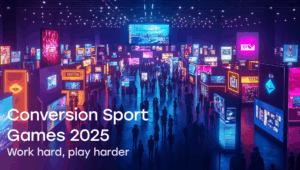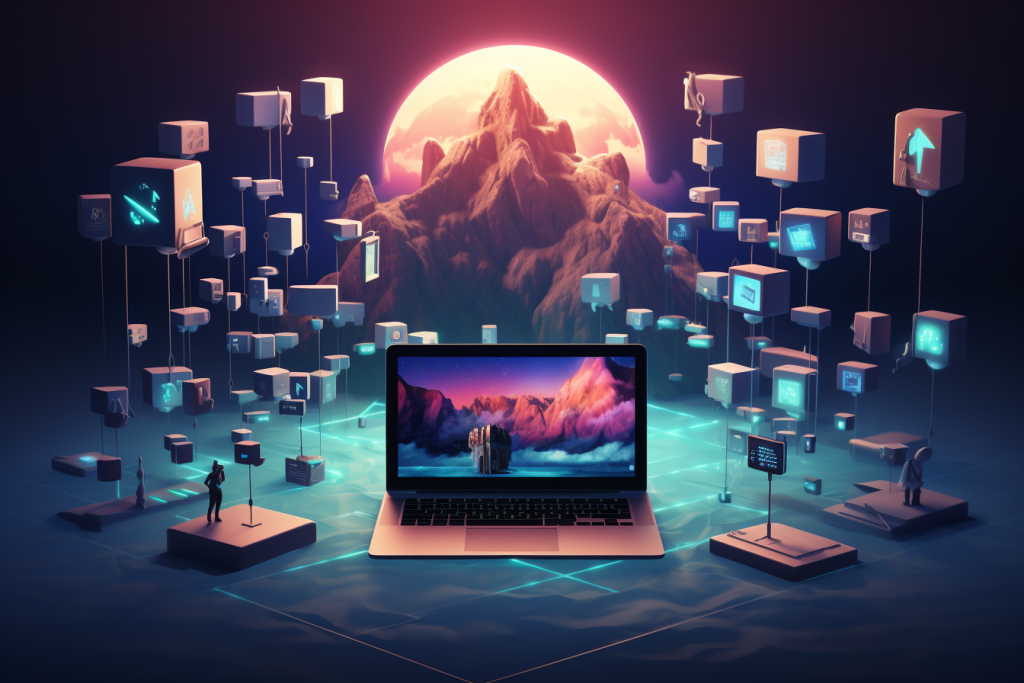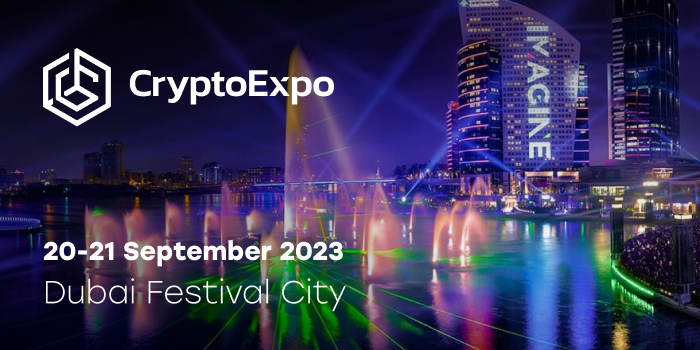share
Crypto collectibles tokens have become the main trend of 2021: digital pictures, little known to anyone a few years ago, are now worth millions of dollars. For instance, CryptoPunk #7523, created by the studio Larva Labs from the famous pixel art collection of the same name, has become one of the most expensive Non Fungible Tokens ever sold at an auction. This picture was sold on the marketplace OpenSea for 4700 ETH ($11.75 million at the exchange rate at the time of sale).
It is worth noting that in 2017 any user could get a CryptoPunk image for free – it was enough to claim the token. And the most expensive NFT token in the history of the crypto industry was Beeple’s collage “The Everydays: The First 5000 Days”, which was auctioned for 38,525 ETH ($69.34 million).

According to the analytics service The Block, the trading volume of non-fungible tokens reached a record $7.39 billion in January 2022: ~2.7 times more than the previous month.
The diversity of the decentralized world has stirred the minds of internet users: while newcomers shy away from a phenomenon like the crypto market, crypto enthusiasts explore entire virtual universes whose only value is virtual assets.
In this article, we will analyze what a non-fungible token is, how it differs from a standard token, how to create unique artworks, what difficulties you will encounter when developing Non Fungible Tokens and how to choose a non-fungible token platform for sale.
What Is a Non-fungible Token?

A non-fungible token is a unique digital asset that cannot be replaced by anything else and guarantees irrefutable property rights. Non Fungible Tokens refer to intangible assets – they do not exist in physical or virtual form. All you have is a private key that you can use to prove that you own the record on the blockchain that stores information about a digital object. Unlike tangible assets, Non Fungible Tokens cannot be counterfeited or destroyed – the data about a digital item is stored in a decentralized manner across multiple nodes and is immutable.
Anything can act as a non-fungible token:
- Unique artworks, videos, or audio tracks.
- A virtual or physical artwork.
- Any movable or immovable property: house, flat, car, or land.
- Rare items.
- Real estate assets.

What Is the Difference Between NFT and a Fungible Token?
An NFT token is developed based on the ERC-721 or ERC-1155 standards for Ethereum non-fungible tokens, which are used exclusively for this type of digital asset. Any standard token, such as Tether (USDT) or Uniswap (UNI), is developed based on the ERC-20 format, which is specifically designed for fungible tokens. Various blockchain platforms use similar standards, such as BEP-721 and BEP-1155 on the BSC network.
To understand how Non Fungible Tokens differ from Fungible Tokens, let us highlight the key features of NFTs:
- Non-fungible. This feature means that you cannot exchange one NFT for another as readily as other digital assets, such as BTC and ETH. First, it is not clear how to calculate the cost. Second, the number of Non Fungible Tokens often does not exceed 10,000, which does not provide the market with the necessary liquidity. This factor is to do with the following characteristics.
- Indivisibility or wholeness. You can divide 1 BTC into 100 million Satoshi, which allows you to trade Bitcoin market shares – 0.1, 0.01, 0.001 BTC, and so on. But splitting an NFT is not possible. That is, you can not sell just half of it: Either you buy it whole, or you do not.
- Uniqueness or rarity. For example, the maximum number of Bitcoins that can be mined is 21,000,000, but each BTC is identical to the other, so we end up with 21 million copies of the same asset. Just like USDT, USDC and BUSD are similar tokens even though they are issued on different blockchain platforms. But each Non-Fungible Token, even from a large collection, can be unique and not like another. That makes them more valuable. You can argue that Bitcoin is also quite rare, but try to find at least 5 differences between BTC and ETH as assets. We are sure you will not find more than two or three.
- Value. Cryptocurrencies like ETH or BNB can be a means of payment or an asset. Here, their possibilities are indeed limited. There are many uses for Non Fungible Tokens: as an art or copyright object for use in cinema, as a collectible, as a digital product, and more.
Why Are NFT Tokens So Popular?
Unique and rare assets released using blockchain technology have become a new form of digital art. According to Morning Consult, 42% of Millennials collect NFTs.
Users have realized that virtual collectibles are no less valuable than real goods. But to keep digital copies, you don’t need to look for specific storage spaces, and transferring rights on the blockchain is much easier: every NFT buyer immediately gets the right to own a digital art object, as the ownership data is immediately recorded in the DLT. In other words, virtual, non-fungible digital assets have virtually no overhead.
The current world no longer seems able to surprise users who are used to everything: real-world assets become obsolete and lose their original appearance, while any NFT token can be kept unchanged forever. The digital space opens up a huge scope for creativity and the creation of entire virtual worlds – meta-universes (metaverses) at the center of which they stand. Tangible and intangible assets still compete with each other, but in the last two years, there has been a clear preponderance in favor of Non Fungible Tokens.

How to Create Your Own Non-fungible Token?
Whether you have unique talents or not, you can create an NFT token and try to sell it in an auction. Even if you don’t have a clue what you’re doing, you can paint a random picture using the Paint program or random record sounds from your environment and then use a neural network to create unique work – your NFT token is ready.
You can also entrust this task to someone else or simply buy any piece of art, convert it into an NFT token using a smart contract, and put it up for sale on a NFT marketplace such as OpenSea or Rarible. Here are a few ways to create your own unique token.
The 1st Way – Create Your Own Non-fungible Token
The easiest way to create your own unique digital assets is to learn how to make pixel art. After spending a few hours studying free video tutorials on Youtube, you will learn how to create simple pixel art, and you can quickly post artwork or even a collection on any marketplace on the blockchain network.
You can take multiple courses and become an artist to create professional art or animations. When you learn the craft, you will have at least two sources of income – selling digital art on the NFT market and creating video tutorials on “Non-Fungible Token development: from zero to hero,” for example.
The 2nd Way – Contact a Professional Art Studio
If you cannot or do not want to create a virtual world item, Digital Content Creators will help you do so for a fee. Order a colorful anime art or an artistic painting in the style of impressionism!
NFT token development is not necessarily limited to images – publish a video or create a music album. Be creative: you can destroy a rare physical object and digitize it. Create!
The 3rd Way – Use NFT Token Development Services
Companies specializing in Non-Fungible Token development (NFT development) will do everything for you. You can order services and expect results. Designers will create a unique piece of art, and experienced developers will convert it into an NFT token and present it on the blockchain. You can even present your own platform on multiple smart contracts for trading.
The full cycle of NFT token development involves not only creating an instance and converting it into digital assets using blockchain technology but also a promotion that will help you turn an unknown object into a coveted piece of art.

Stages of Non Fungible Token Development
Be patient because NFT token development is not a quick process, especially if you want to issue a whole collection. It will take more time, effort, and possibly money, but the collection can bring more profit both in the short and long term.
Non-fungible Token Development and Concept Creation
The first phase of Non-Fungible Token development (NFT development) is to create an original product. We have already written about how to create NFT tokens for later sale on marketplaces. Before that, however, it is important to develop the concept itself: decide whether you want to create a collection – a series of thematic artworks – or whether you want them to be unrelated works.
If you need a range of services, you can use the services of the NFT token development company, which will guide you through all stages – from concept and design to the auction itself.
Choosing a Blockchain Network
Before deciding on the NFT platform on which you will issue and sell the Non Fungible Token you have created, you need to choose a suitable decentralized network, taking into account its characteristics and various factors. Here is a list of the most popular blockchain platforms.
The Ethereum blockchain is the most popular decentralized network with smart contracts, leading in the number of Non Fungible Tokens issued on it.
Binance Smart Chain (BSC) is the second most popular blockchain network created by the well-known crypto exchange Binance.
Solana is one of the fastest blockchain platforms, with a throughput of up to 65,000 transactions per second. In comparison, Ethereum can only process 15 transactions per second, while BSC can process up to 65 transactions.
The Tron network is similar to Ethereum in many ways, but it is more productive and primarily focused on the game and non-fungible token development (NFT development).
So Which Network Should You Choose?
On the one hand, the Ethereum blockchain network has the largest user base, surpassing all other smart contracts platforms combined. On the other hand, Ethereum has a number of critical scalability issues, such as long transaction times and high gas or transaction processing fees amounting to tens of dollars and sometimes exceeding $100 per transaction. With this in mind, it is unlikely to be worth your while to sell Non Fungible Tokens worth less than $100.
Also, take into consideration vulnerabilities regularly discovered in DApps leading to loss of assets, although Ethereum’s smart contract itself is secure.
Also, since Ethereum has the most users, the competition is much greater compared to other platforms. Look out for alternative platforms: they may be less expensive.
Note
Сhoosing a blockchain is one of the most important steps. Note that transferring tokens from one network to another is not a simple task, which can also lead to the loss of NFT if you do not know how to transfer tokens correctly. While you can create wrapped tokens, it is best and safest to store assets on the original blockchain.

Creating a Wallet
You will need a secure place to store the NFT token you have created or purchased. The wallet services you use must support ERC-721/ERC-1155 crypto tokens.
It is most convenient to use multi-currency mobile wallets: in them, you can store Non Fungible Tokens on multiple blockchains at the same time and quickly connect to marketplaces using a QR code with the WalletConnect feature. Popular NFT-enabled wallets include:
- MetaMask
- Trust wallet
- SafePal
- Ledger
- Trust wallet.
Non Fungible Token Development (NFT Development).
So you have created an original product, chosen a blockchain, and prepared a wallet. Now you need to convert your artwork into a digital copy on the blockchain. How do you do that?
You can forgo developing Non Fungible Tokens – leading decentralized NFT marketplaces like OpenSea to allow you to do this with just a few clicks while offering irrefutable ownership. However, if you want to publish Non Fungible Tokens on centralized platforms like Binance NFT, where authors go through a rigorous selection process, you may need the help of NFT token development services.
Publication
After developing Non Fungible Tokens, you need to publish your digital work. To do this, simply connect the wallet, enter the data about the token and sign the transaction. Anyone can easily place the created digital collectible on a decentralized marketplace.
Promotion
A profitable business is based on a good presentation, so do not skimp on marketing services. The beauty + quality + marketing formula is always a win-win situation.
We are sure that when the Coca-Cola brand launches its NFT collection, it will immediately sell out at an inflated price. By the way, that actually happened: at the OpenSea auction, the company sold its Non Interchangeable tokens for more than $575,000.
So What’s the Secret?
Why is trivial pixel art worth millions of dollars when anyone can create it? The answer is also simple – meaning. True connoisseurs do not care how elegantly the image is made. More important is the informational halo that surrounds that object. CryptoPunks has become a pioneer in the same way that Bitcoin has become a pioneer among digital currencies. That is why investors value it so much.
A well-known studio with millions of fans can release a nondescript Non-Fungible Token, but it will cost more than a masterpiece created by a little-known artist because the works of popular authors will have thousands of people wanting to buy them: they are famous, often talked about and you have a reason to brag to others about your purchase.
Do you want the whole world to hear about your original digital assets? Try ICODA marketing services. In addition to promoting Non Fungible Tokens, the company offers comprehensive DeFi services. ICODA can create scalable tokens, smart contracts, and even a unique blockchain.

FAQ
Do I need programming skills for NFT token development?
No. All you need is a piece of creative art, a video, or a soundtrack that you convert into an NFT. No technical knowledge is required to develop Non Fungible Tokens. On the OpenSea platform, for example, all you need to do is fill out a simple form to start your own NFT token development.
Do I need to use NFT token development services?
Not necessary. You can go all the way on your own, but creating Non Fungible Tokens with a company is safer and faster. We advise you to try different methods and compare the results – this way, you will arrive at the optimal solution.
How to choose an NFT token development company?
Ask the company what non-fungible token development (NFT development) services it offers. As a rule, professionals have rich experience in their field, so they provide a whole range of services. Don’t take our word for it – familiarize yourself with the company’s real-life results. Using those, you can easily understand what the company you’re dealing with is really capable of.
What is the main difficulty of non-fungible token development (NFT development)?
The most difficult thing may not even be the development of the NFT token itself but the choice of a blockchain network. The nuances of token development are that they cannot be transferred directly from one platform to another, for example, from BSC to Ethereum. Of course, you can convert tokens from BEP-721 to ERC-721 format via a smart contract, but it is easier and more efficient to use non-fungible tokens on the original blockchain.

Results
Developing NFT tokens requires a holistic approach: even if you create an attractive art or audio track, that is no guarantee that you will sell your work. Competent marketing is also important to attract attention in the NFT world.
ICODA has been in the crypto business for quite some time and knows how to get clients to really want to buy your Non Fungible Tokens!









